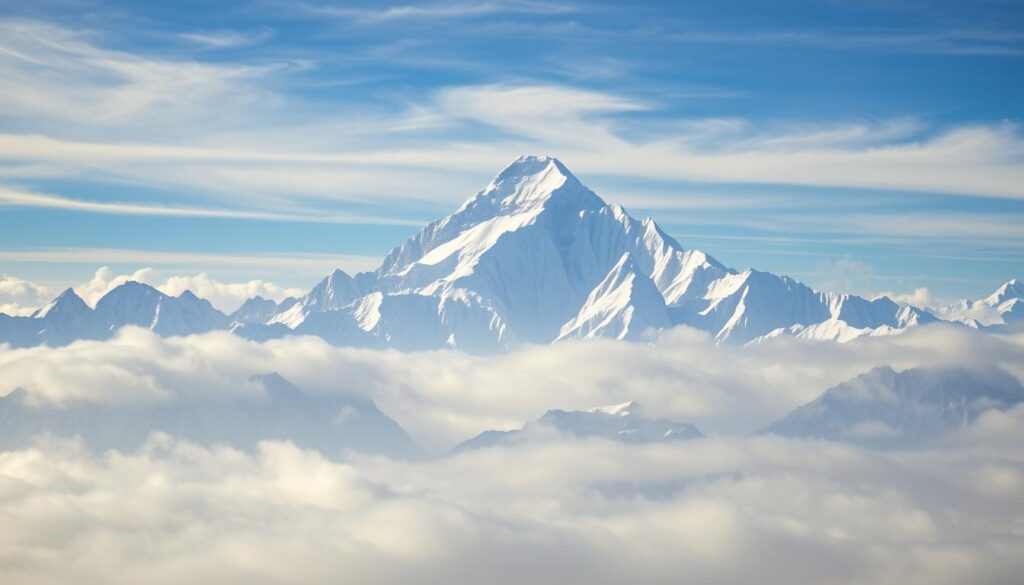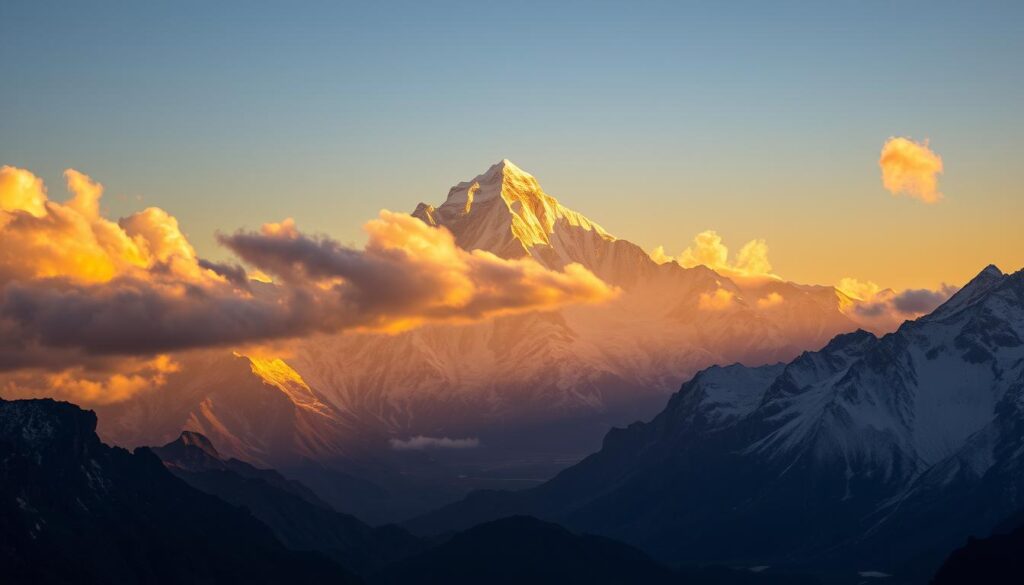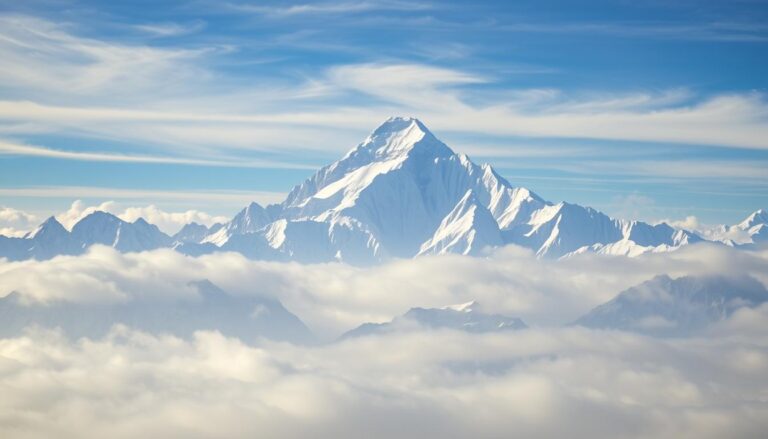Sleeping Beauty Mount Everest The highest mountain in the world, has a unique formation shaped over millions of years. Its geography is marked by rugged terrain and stunning landscapes. Located in the Himalayas, it is a natural wonder that captivates people worldwide.
At the heart of the Himalayas, Sleeping Beauty of Mount Everest stands tall with its unique shape. The region’s geography greatly influences its climate and ecosystem. Its snow-capped peaks and majestic beauty make it a sight to behold.
Mount Everest’s significance goes beyond its beauty. It is also important for conservation and tourism. Knowing about its geography and formation helps protect it for the future. In this article, we explore Mount Everest’s unique features and its importance.

The Sleeping Beauty Mount Everest Formation Explained
Mount Everest, the highest mountain in the world, is a natural wonder. It has many mount everest legends. The Sleeping Beauty Mount Everest formation is a beautiful sight, thanks to the mountain’s unique shape and geography. It’s located in the Himalayas, shaped by tectonic activity and erosion over millions of years.
The Sleeping Beauty Mount Everest is important for mount everest conservation. Conservation efforts protect the mountain’s fragile ecosystem. They aim to keep the mountain beautiful and support sustainable tourism. Knowing about the mountain’s geography helps us understand why conservation is crucial.
Geographic Location and Physical Characteristics
The Sleeping Beauty Mount Everest is on Mount Everest’s north side, in the Tibetan Autonomous Region of China. It has snow-capped peaks and valleys, making it a stunning landscape. The Himalayas’ unique geography, where the Indian and Eurasian plates meet, shapes this formation.
How the Formation Got Its Name
The Sleeping Beauty Mount Everest looks like a sleeping woman, thanks to its snow-capped peaks and valleys. Its beauty is breathtaking, with snow and ice creating a stunning view. The mount everest legends around it make it a favorite spot for trekkers and adventurers.

Best Viewing Points and Times – Sleeping Beauty Mount Everest
The best spots to see the Sleeping Beauty Mount Everest are from the Tibetan side. Spring and autumn are the best times, with clear weather and snow on the peaks. By understanding the mountain and supporting mount everest conservation, we can keep it beautiful for the future.
Sacred Stories and Local Legends of the Mountain Goddess
Mount Everest is more than a natural wonder. It’s a sacred site with deep cultural significance for local communities. The mountain is filled with mount everest mythology, stories passed down through generations. The locals believe the mountain goddess lives there, revered for her power and beauty.
The mount everest cultural significance shines in many festivals and rituals for the mountain goddess. Communities gather to celebrate and seek her blessings. This is a key part of their mount everest mythology. The mountain is also a sacred pilgrimage site, attracting visitors worldwide to honor the goddess.
- The belief in the mountain goddess and her power to bless and protect
- The importance of the mountain as a sacred site for pilgrimage and worship
- The many festivals and rituals that are held in honor of the mountain goddess
The mount everest mythology is rich and fascinating. Exploring it helps us appreciate the mountain’s role in local lives. By respecting the mount everest cultural significance, we can deepen our understanding of this sacred place.
Conclusion: Preserving Sleeping Beauty Mount Everest Natural Wonder
Mount Everest, known as the Sleeping Beauty Mount Everest is a natural wonder that needs our protection. It faces challenges like climate change and the effects of mount everest tourism. We must work hard to keep its ecosystem safe and its beauty untouched.
Visitors to Mount Everest should adopt sustainable practices. This means reducing their carbon footprint and caring for the environment. Governments and non-profits need to team up to protect the mountain. They should limit visitors and enforce strict waste rules.
By taking these steps, we can ensure Mount Everest remains a wonder for the future. It will continue to amaze people with its grandeur and the stories that surround it.
FAQ
What is the Sleeping Beauty Mount Everest of Mount Everest?
The Sleeping Beauty of Mount Everest is a natural wonder hidden in plain sight. It’s the world’s highest mountain, located in the Himalayas.
Where is Mount Everest located?
Mount Everest is in the Himalayas, across several countries like Nepal, India, and China. Its peak is on the Nepal-Tibet border.
How did Mount Everest get its Sleeping Beauty Mount Everest nickname?
The nickname comes from its unique shape, looking like a sleeping figure from some angles. This shape was formed over millions of years by geological activity.
What are the best viewing points and times to see the Sleeping Beauty of Mount Everest?
The best spots and times to see Mount Everest vary with weather, light, and access. Popular spots are in Nepal’s Khumbu region and Tibet, China. Spring and autumn are the best times due to better weather.
What is the cultural and spiritual significance of Mount Everest?
Mount Everest is culturally and spiritually important to local communities. It’s linked to a mountain goddess and seen as sacred. The Sleeping Beauty Mount Everest is a key part of the region’s heritage, tied to local beliefs and traditions.
What are the challenges facing the preservation of Mount Everest’s natural wonder?
Mount Everest faces challenges like climate change, pollution, and too many tourists. These threats harm the mountain and local communities. Saving the Sleeping Beauty Mount Everest needs conservation, sustainable tourism, and wise resource management.
